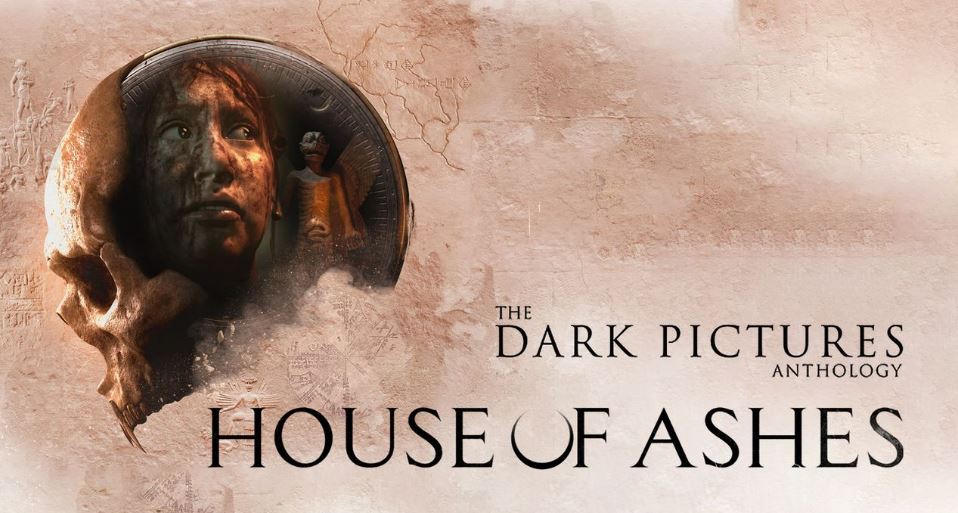Assassin’s Creed Shadows Review
Assassin’s Creed Shadows Review
Table of Contents
Ubisoft has a lot riding on the shoulders of Assassin’s Creed Shadows, which is considered one of the more anticipated Assassin’s Creed titles in recent memory (for whatever reason suits your narrative). With Yasuke and Naoe taking center stage, the duo faces the daunting task of revitalizing faith in this beloved series.
At long last, Assassin’s Creed Shadows ushers the series into Japan—a setting that has long seemed like an obvious choice. However, such an overdue arrival inevitably invites comparisons, adding another hurdle to overcome for the embattled publisher. There are a lot of familiar elements here, and while players may get turned off by the fact that the general formula has retained its form and has not evolved too much, there are worthwhile additions here that merit a look.
In many ways, Assassin’s Creed Shadows represents a commendable effort by Ubisoft, offering an engaging experience despite some shortcomings. Beneath the noise of social media narratives lies an enjoyable game, though a handful of puzzling design choices prevent it from reaching its full potential as a standout installment in the series.
Once Upon a Time
Assassin’s Creed Shadows is set in 1579 during the Azuchi-Momoyama period, a transformative era marked by Oda Nobunaga’s relentless rise to power through successive conquests. The game opens with a prologue introducing the protagonists, Yasuke and Naoe, each navigating distinct and compelling paths. All the surrounding noise around Yasuke is overblown, and the game does some semblance of justice to his inclusion.
Yasuke, recognized for his potential, is taken under Nobunaga’s wing and eventually becomes one of his most trusted samurai. In contrast, Naoe embarks on a mission of vengeance, seeking justice for the destruction and pillaging of her home province of Iga by Nobunaga’s invading forces. Her journey becomes even more intricate when she encounters the Shinbakufu, a shadowy organization manipulating events from behind the scenes and responsible for a deeply personal loss in her life.
The prologue is a standout affair, effectively setting the stage for the narrative. Naoe’s motivations are particularly compelling, as her quest for justice and retribution adds a personal depth that sets this installment apart. Unlike previous entries where antagonists were simply portrayed as generic bad guys that did bad stuff, Assassin’s Creed Shadows raises the stakes with a more personal and emotionally driven storyline.
Sadly, parts of the storyline might catch players off guard because the game switches to Naoe and Yasuke at certain times. A number of flashbacks also provide more context, and while some players may enjoy that type of storytelling, others may not be too appreciative of it, possibly a bit of confusion to the ongoing proceedings. Overall, while the story is a bit on the weaker side of things, Yasuke and Naoe are memorable characters worth following throughout the game.

A Sight to Behold
Visually, Assassin’s Creed Shadows sets a new standard for the series. Ubisoft has brought Feudal Japan to life in breathtaking detail, making it arguably the most visually impressive installment to date. From the stunning views atop castles and mountains to the meticulously crafted shrines and fortresses, every element is seamlessly integrated into the world as Ubisoft continues its tradition of creating immersive and visually stunning environments.
Dynamic weather in Assassin’s Creed Shadows introduces visual variety and functional gameplay changes. Winter slows traversal due to snow-covered terrain, while rain serves as an audiovisual cover, masking footsteps and reducing enemies’ visibility. This feature provides a way to enhance immersion and periodically refresh the game world, offering aesthetic appeal and practical advantages.
Players expecting the usual abundance of map markers may find a slight change in approach. While the traditional synchronization of viewpoints to reveal the map remains, Assassin’s Creed Shadows slightly favors organic exploration. Players are incentivized to navigate the world without relying heavily on waypoints, finding out new activities and markers as they uncover more parts of the map.
Quests are structured to guide players with general directions and contextual clues—such as, “the target is south of X, near the temple of Y”—requiring players to use their investigative skills. Alternatively, players can utilize “Scouts,” a resource that can be replenished for a minimal fee or through seasonal changes. Scouts not only pinpoint a target’s exact location but can also gather resources and reduce the player’s wanted level. While useful, it feels like a direct counter to encouraging organic discovery, and it feels like Ubisoft just added an extra layer of menus and buttons to replace the map markers that would otherwise appear automatically.

Explore Away
The world of Assassin’s Creed Shadows is teeming with activities. Side quests from NPCs, temporary buffs from shrines, meditation spots, and even wildlife observation offer cosmetic rewards. Players will also encounter temples and shrines requiring the collection of specific items to complete objectives. While varied, some of these activities lack depth, but accomplishing them is straightforward and yields Knowledge Points, which are critical for unlocking advanced skills that improve the combat capabilities of Naoe and Yasuke.
The castles scattered across the world provide a more intense challenge. These sprawling locations are rich in resources and heavily guarded. Players must eliminate all Samirai Daisho’s in these areas to claim high-value rewards, necessitating a methodical approach to exploration and combat. The effort is well worth it, as these areas offer some of the game’s better gear.
The main objectives in Assassin’s Creed Shadows are documented in its objective board, which shows the many activities both protagonists can undertake while hunting the mysterious group known as the Shinbakufu, similar to the Order of the Ancients from Valhalla. They are quite a compelling group, and Naoe and Yasuke must uncover their secrets through sub-quests before eliminating the target, similar to previous installments.
Base building is another feature introduced in Assassin’s Creed Shadows. Players can use resources collected during their journey—such as crops and wood—to construct and upgrade structures like dojos. These upgrades provide tangible gameplay benefits, including additional Scouts and enhanced equipment capabilities. Despite its potential, this feature lacks compelling incentives, and many players may only engage with it minimally to obtain necessary upgrades.
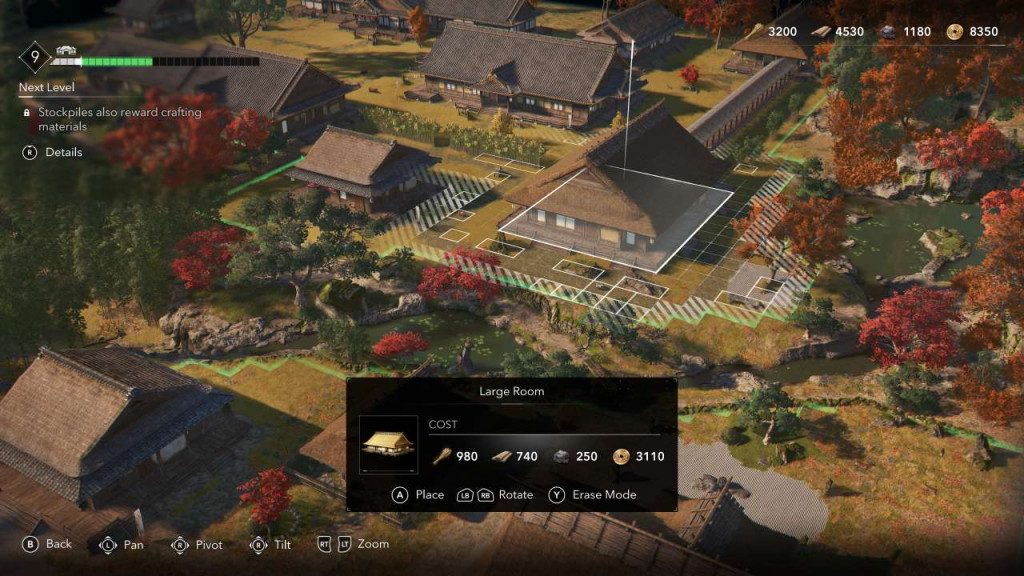
A Tale of Two Swords
Stealth and combat are at the heart of Assassin’s Creed Shadows, with significant updates centered on its dual protagonists, Naoe and Yasuke. Of the two, Naoe stands out as the more compelling lead, as the game’s design heavily favors her skillset, enhancing her role in ways that make her gameplay experience particularly engaging like the game was built for her.
Simply put, Naoe puts the assassin in Assassin’s Creed Shadows. The enhanced stealth mechanics make controlling her dynamic and enjoyable. Agile and nimble, she moves with precision, reminiscent of iconic characters like Ezio and Basim. Her arsenal includes tools like a grappling hook, allowing her to scale vertical obstacles and access synchronized points that Yasuke cannot reach, along with her version of eagle vision that will enable her to spot and tag enemies.
This emphasis on stealth in Assassin’s Creed Shadows is further enriched by new mechanics, such as going prone and leveraging light and shadows for concealment. Her assassination moves are visually satisfying, but certain bigger and stronger enemies will have a sliver of life left after an assassination attempt. In contrast, others will completely shrug off the kill shot, forcing Naoe to engage in melee combat. While this may irritate fans, and I’m not entirely fond of the feature, it does work in a logical sense.
On normal difficulty, however, the stealth experience may feel underwhelming. Enemy AI often reverts to predictable patterns—investigating one by one, making it easier for Naoe to dispatch them. The stealth gameplay of Assassin’s Creed Shadows is fully realized in expert difficulty, and in this setting, the gameplay takes on a more intense and rewarding edge. Enemies are more perceptive, spotting Naoe from elevated positions and searching for her in coordinated groups. Players must utilize prone, extinguish light sources, and frequently exploit alternative pathways. These improvements elevate the stealth mechanics, making it feel closer to an authentic “assassin’s game.”
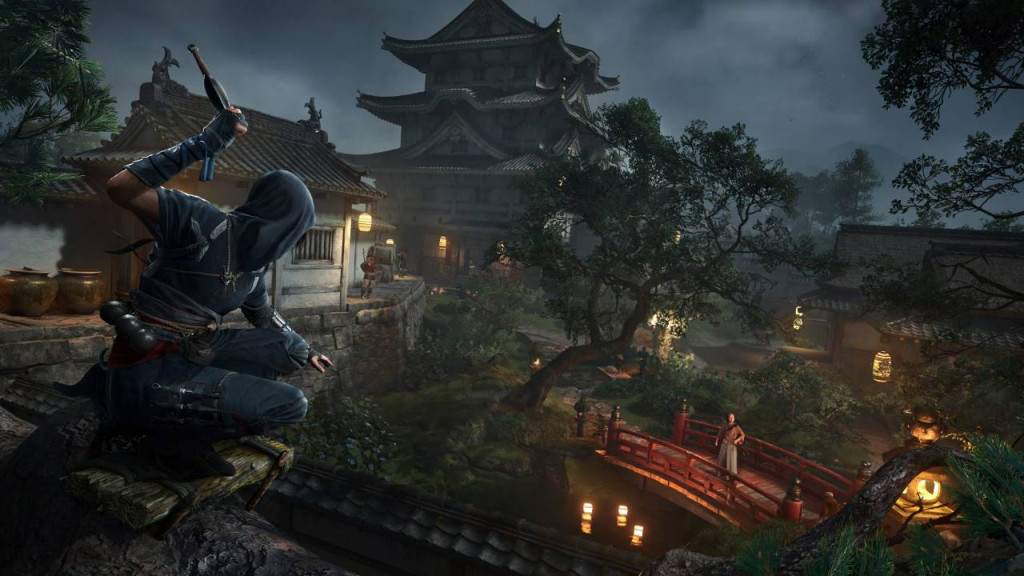
When engaging in melee combat, Naoe demonstrates remarkable capability, leveraging her agility and speed rather than sheer power. Her survival depends on precise dodging and well-timed parries, as she can only withstand a few hits. Enemies telegraph their attacks with distinct cues—blue for parryable moves and red for unblockable strikes—requiring players to react strategically. Successful defense leaves adversaries off balance, creating openings for significant damage. Naoe’s arsenal includes her signature Katana for versatility, a Kusarigama for sweeping attacks, and a Tanto for rapid strikes, complemented by classic Assassin’s Creed tools such as shurikens and smoke bombs.
The melee combat in Assassin’s Creed Shadows offers some improvements over the formula popularized by the Origins-Odyssey-Valhalla trilogy, with more intelligent enemies that have patterns of dodging and counterattacking that will make each enemy a slight puzzle that needs to be solved. Players can perform posture attacks that can break the enemy guard, giving opportunities to deal damage and countering the urge to spam the attack button. Equipment is offered in rarity levels, with higher rarities providing more perks, and while that’s the case, it isn’t a total lootfest.
Skills, or Masteries as they are called in Assassin’s Creed Shadows, are much more streamlined this time around. Players will gain mastery points by engaging with the world and its activities, and while higher mastery tiers holding more powerful abilities are initially locked before you acquire enough knowledge points, they are easy to obtain by just regularly playing through the game.
Yasuke embodies the Samurai archetype, excelling in raw melee prowess. However, his gameplay feels constrained, as he is excluded from certain activities, making him feel secondary despite being a central protagonist. His imposing build limits his stealth capabilities—he is easily detected in bushes, his footsteps are audible, and he cannot access some synchronization points or elevated areas, often necessitating a switch to Naoe to complete objectives. These restrictions can disrupt the user experience and may frustrate players.

These limitations often lead to a preference for Naoe, as she offers access to most game mechanics and features. The frequent need to switch between characters to engage with different systems feels cumbersome, prompting many players to continue the story exclusively as Naoe for a more seamless and satisfying gameplay experience.
Yasuke, despite his limitations, truly shines in melee combat, where his overwhelming power often makes encounters feel effortless. Players may find him overpowered, as lethal damage can usually be achieved by simply spamming R1 or R2. Wielding an impressive arsenal that includes a Naginata, a bow, a Teppo firearm, a blunt Kanabo, and a long katana, Yasuke delivers devastating damage that can make the intricacies of combat seem trivial.
His playstyle is notably distinct from Naoe’s, offering an alternative experience. While some activities and narrative moments are exclusive to Yasuke, as they are to Naoe, the constraints placed on Yasuke’s gameplay might deter players from favoring him over the more versatile Naoe.
Naoe and Yasuke can summon allies for assistance when faced with challenging situations in Assassin’s Creed Shadows. Recruiting these allies involves completing their respective questlines, but the rewards are well worth the effort. For instance, Yaya functions as a tank-like Sumo warrior, capable of absorbing and dealing significant damage while drawing enemy attention. Meanwhile, Gennojo excels at creating distractions, providing crucial support when stealth fails and players are exposed. These allies enrich the gameplay by adding strategic options to navigate challenging encounters.
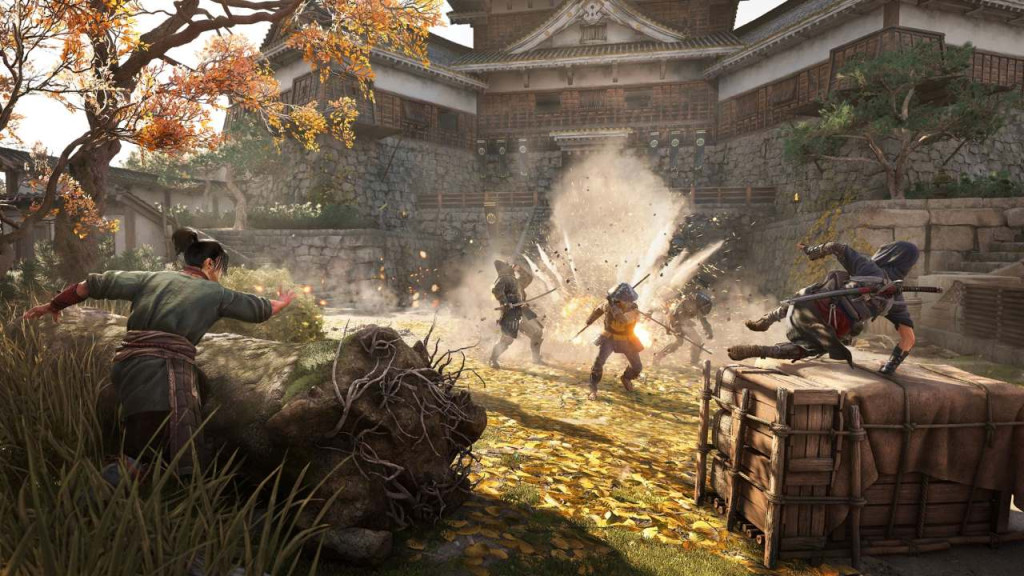
Delays That Paid Off
Assassin’s Creed Shadows is a polished and refined experience despite several delays. During our playthrough, bugs were minimal to non-existent, with only a few instances of low-resolution textures—such as on chests or castle hiding spots—and occasional texture pop-ins. Overall, the game delivers an impressively smooth and immersive experience, but mileage may vary.
On a base PS5 in balanced mode, the game consistently achieves its promised 40fps across various environments and combat scenarios. While minor frame dips were observed within the hideout, these issues were rare, and the game maintained its visual fidelity and performance throughout.
Additionally, Assassin’s Creed Shadows is Steam Deck verified. Although we have yet to test it on Valve’s handheld device, we plan to update this review with a performance analysis as soon as possible.
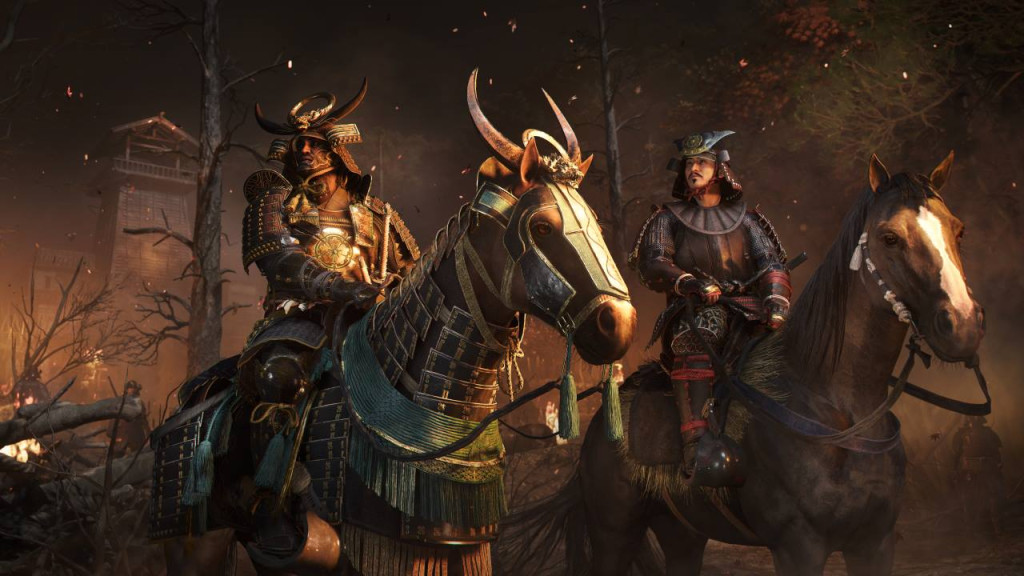
Verdict: Buy it!

Assassin’s Creed Shadows is a notable achievement from Ubisoft, offering an experience that both long-time fans and newcomers are likely to appreciate. This latest addition to the franchise is visually stunning, and its refined stealth systems and other enhancements make it one of the best Assassin’s Creed games in recent memory.
However, the dual-protagonist approach might prove to be divisive. While the concept is innovative, its execution falters in certain areas. The game seems predominantly tailored to Naoe, whose abilities allow her to fully engage with nearly all aspects of gameplay. In contrast, Yasuke’s limitations may alienate some players, as they frequently must alternate between the two characters to access different features.
Despite these shortcomings, Assassin’s Creed Shadows remains an enjoyable and polished entry. While it builds upon the established formula rather than revolutionizing it, the game represents a clear step forward for the series and something that Ubisoft deperately needed.
*Assassin’s Creed Shadows was reviewed on a PS5 with a review code provided by the publisher.
Assassin's Creed Shadows Review
Assassin's Creed Shadows is a notable achievement, offering an experience that both long-time fans and newcomers are likely to appreciate.
PROS
- Impressive visuals and gorgeous scenes
- Improved stealth mechanics are very welcome
- Performance is generally good
CONS
- Yasuke's limitations can lead to frustrating moments
- Some side activities are not compelling
- Story is a bit on the weaker side



